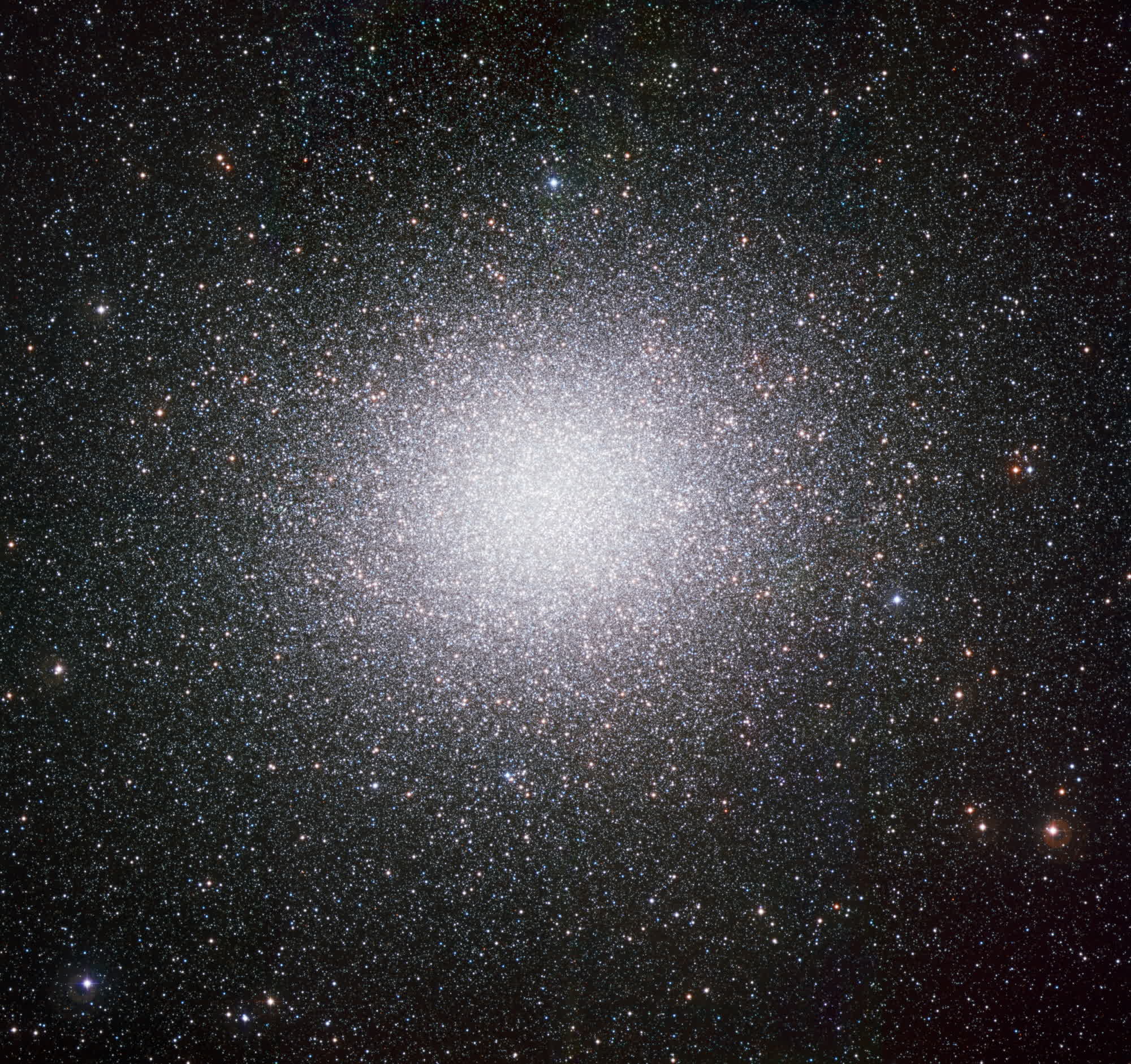Hidden Holes: Omega Centauri is a globular cluster hosting around 10 million stars and is visible from Earth's southern hemisphere with the naked eye. The cluster has been studied for 2,000 years and is still revealing its unexpected secrets thanks to modern, space-bound observatories.
An international team of astronomers studied more than 500 images of the Omega Centauri globular cluster taken with the Hubble Space Telescope, an effort originally intended to calibrate Hubble's instruments. However, they discovered something unexpected among the millions of stars in the cluster, located 17,000 light years from Earth.
Maximilian Häberle, a researcher at the Max Planck Institute for Astronomy in Germany and head of a new study published in the journal Nature, explains that his team discovered seven stars that "should not be there." These stars are moving so fast, Häberle said, that they should escape the cluster's gravitational influence. "The most likely explanation is that a very massive object is gravitationally pulling on these stars and keeping them close to the center," Häberle said.
The only phenomenon massive enough to have such a gravitational pull is a black hole, with an estimated mass of at least 8,200 times that of our Sun. The still-unknown object could very well be an intermediate-mass black hole (IMBH), a type of black hole considered the "missing link" in the study of black hole evolution.

IMBHs are very elusive space phenomena, sitting right between extremely massive black holes like Sagittarius A* and "lightweight" black holes weighing less than 100 solar masses. Previous studies have already suggested that Omega Centauri could host an IMBH, but the new research led by Häberle provides the most direct evidence yet for an intermediate-mass black hole influencing some of the stars in the cluster.
So far, we have discovered very few IMBH candidates in the universe, which means the black hole in Omega Centauri could be the best example of an IMBH in our "cosmic neighborhood." Further studies will now be required to confirm that the black hole is actually there, determine its exact mass, and identify other distinguishing traits.
Moreover, the IMBH in Omega Centauri would be closer to Earth than Sagittarius A*, the supermassive black hole (4.3 million solar masses) located 26,000 light-years away at the center of the Milky Way. It would also be the only known case of a black hole influencing a group of stars through its gravity, besides the aforementioned Sagittarius A*.
